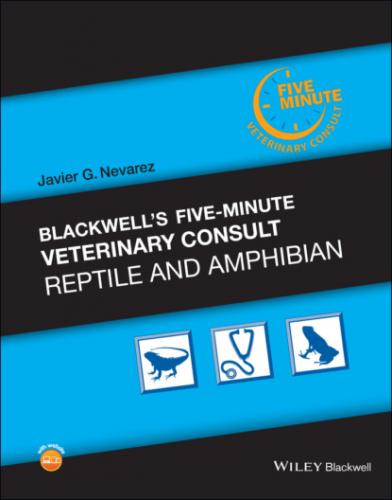Pericardial effusion is reported in many species but a small amount of fluid within the pericardial sac may also be normal. The etiology of pathologic pericardial effusion is unknown.
SIGNALMENT/HISTORY
There are no known species, sex, or age predilections.
Weakness and dyspnea
Swelling in the area of the neck and/or peripheral edema.
CLINICAL PRESENTATION
Presentation is similar to that seen in mammals.
Some differences exist due to differing cardiovascular physiology and anatomy.
Non‐specific clinical signs such as lethargy, depression, anorexia, weight loss, weakness, dyspnea, bilateral exophthalmia, and sudden death.
Cyanosis
Peripheral edema (e.g., in gular region)
Pulmonary edema, ascites
Neurological signs such as ataxia and head tilt in case of brain anoxia.
Peripheral thrombosis and necrosis in case of filarial infestation of the cardiovascular system.
Coughing is not a feature of congestive heart failure as observed in mammals.
RISK FACTORS
Husbandry
Inadequate husbandry, resulting in chronic stress, immune suppression and malnutrition, is the most likely common predisposing factor for the development of cardiovascular conditions in captive reptiles.
Others
Atherosclerosis and viral diseases can also be predisposing factors.
DIFFERENTIAL DIAGNOSIS
All other diseases that induce lethargy and/ or respiratory distress.
DIAGNOSTICS
Ambient temperature can influence cardiopulmonary parameters in reptiles so must be considered during examination.
Auscultation
The use of a stethoscope is impossible because of the osteodermic shell.
A continuous Doppler ultrasonic probe (8 MHz) can also be used for cardiac “auscultation”. It allows determination of heart rate and rhythm but only indicates blood flow (not valve closure).
Ultrasound
The most practical diagnostic tool for antemortem evaluation of reptilian heart diseases.
Allows visualization of blood flow within the heart. In chelonians, the transducer is placed in the cervicobrachial area.
Hematology and Biochemistry
Blood pressure measurement and pulse oximetry are not reliable in reptiles.
Clinical Pathology
CK and LDH may increase with conditions affecting the cardiac muscle in reptiles, such as myocarditis or infarct. However, these are non‐specific measurements and may also increase with skeletal muscle damage from traumatic injuries, loss of body condition, and intramuscular injections.
Currently, cardiac troponins have not been assessed in chelonians.
Leukocytosis, lymphocytosis, and heterophilia may be present, and are suggestive of underlying infections or hematopoietic neoplasia with secondary cardiac effects.
Electrocardiography
Low electric amplitudes (usually < 1.0 mV) and standard parameters not established for many species.
Common findings in the normal reptilian ECG include P‐wave pleomorphism, very small Q and S deflections and prolonged Q‐T intervals compared with similar‐ sized mammals.
Correct electrode placement (challenging in reptiles) is essential to avoid erroneous ECG readings.
Radiography
Challenging to produce images of high diagnostic value, especially in chelonians.
CT and MRI
Apart from obvious cardiomyopathy, neither CT nor MRI (unless using a very high magnetic field strengths) are of use for visualizing intracardiac structures and large vessels.
Evaluate for concurrent disease to determine whether cardiac issue is primary or secondary (neoplastic, infectious).
PATHOLOGICAL FINDINGS
Gross and histopathologic findings depend on the type of heart disease.
APPROPRIATE HEALTH CARE
Little information
The pharmacology of cardiac drugs in reptiles is poorly understood and few data are available in the literature (pharmacokinetics, toxicity, etc.).
NUTRITIONAL SUPPORT
No specific nutritional support considerations or recommendations.
CLIENT EDUCATION/HUSBANDRY RECOMMENDATIONS
Reduce stress by minimizing handling, separating from cage mates, and maintaining the reptile at its preferred optimum temperature.
DRUG(S) OF CHOICE
Beta‐blockers: of unknown effectiveness in reptile patients.
Methylatropine: administration results in an increase in resting heart rate of iguanas (Iguana iguana). No data available for chelonians.
Pimobendan and digoxin: unknown effects in reptiles.
Enalapril: inhibited angiotensin I conversion in alligators at 0.5–0.7 mg/kg once every 24 hours (combined with spironolactone and furosemide). No data available for chelonians.
Furosemide: possible diuretic effect in chelonians despite
